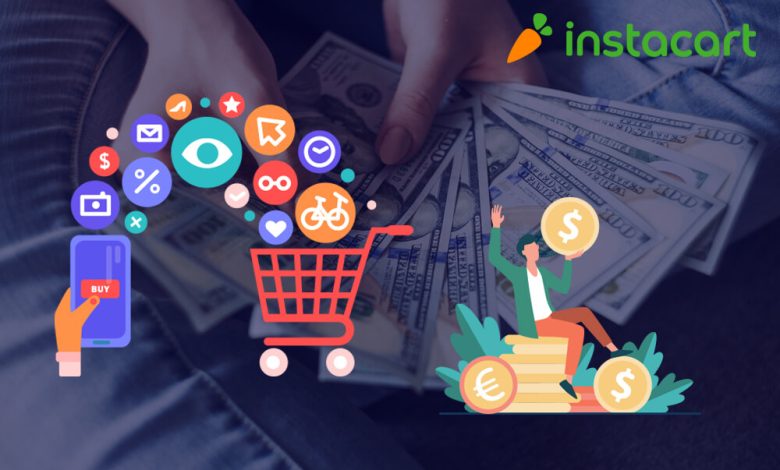Model and Strategy for Growing Grocery Sales With Instacart app

When it comes to online shopping, there are plenty of on-demand home delivery apps competing for market share. The Covid-19 novel coronavirus pandemic lockdown has made it critical for people to ensure that they can get the products they want and like through on-demand grocery delivery like Instacart app.
However, even without a pandemic looming, the ability for people to buy things online and have them delivered to their doorstep is critical.
People have begun to live very busy lives, with jobs and little time to go out and buy groceries. They can simply buy everything they need and have it supplied to their door using a uber for grocery delivery app.
On-Demand Delivery Segment: An Overview
The concept of on-demand delivery is not new. It has been in the market for a long time. It means exactly what it says: On-demand delivery.
You will receive your order within a few hours, which is beneficial for both consumers and businesses. Consumers receive their items on time, with new offers and a wider range of options, while businesses can expand their reach and keep up with changing market dynamics.
Consumers are divided into two categories: economical buyers and comfort buyers.
Affordable shoppers are interested in items that fit their budget and are drawn to the lowest prices, best deals or discounts. Comfort buyers want their products to be delivered as quickly as possible. They will look for the product online, locate the nearest store that sells it, and then buy it. For such buyers, on-demand delivery is an added advantage. It is not only convenient, but also quick. Online shopping allows the frugal shopper to keep an eye out for the best discounts and incentives.
What Impact Does On-Demand Delivery Have On Businesses Around the World?
According to the Harvard Business Review, more than 22.4 million people spent $57.6 billion on on-demand services. It includes an annual budget of $36 billion for on-demand businesses, $5.6 billion for taxi services, and $4.6 billion for food/grocery and retail services.
According to another study, 51% of online service providers in the on-demand market see their financial situation improve, while 64% expect a change in the future.
Customers expect flexibility, personalization, and quick responses. And, to be honest, not every company can choose whether or not to use on-demand delivery. The ball has already been tossed into your court. Walmart has begun to offer home delivery, and Target must respond quickly.
Personalizing the customer experience is something that business owners should consider.Distinguishes your company?
What makes your company’s online experience stand out? Area of expertise, and how will you apply it to the on-demand market?
As the coronavirus spreads throughout the United States, many people have been unable to go out and shop for the most basic necessities. They are unwilling to put their own or anyone else’s lives in danger. And that clearly implies total reliance on delivery services.
Instacart is one of the largest and most widely used grocery delivery services, so we thought it would be a good idea to investigate how it works and learn everything there is to know about it.
What Is Instacart and How Does It Work?
Instacart launched in 2012. This is one of the latest technological advances that Instacart’s business model brings to market. As a pioneer in the on-demand market, Instacart has raised substantial funds to expand its grocery distribution in the United States.
The name Instacart clone app is well known among the American public. It is one of the largest and most accessible grocery stores in the area. Most retailers, small business owners, and large retailers such as Costco and BJ’s Wholesale have partnered with Instacart.
Instacart is like an Uber for grocery delivery.
You can order food online from your local registered grocery store. It dispatches a “personal shopper” to purchase and deliver the items you specify the same day.
Instead of shopping in Instacart’s own huge warehouse, customers shop at other registered local grocery stores in your area.
Conclusion
We will see small market share in retail stores in the coming years. Everyone will begin shopping for everything online. Improved delivery systems, such as drones, and reliable logistics, would help online grocery shopping grow. Anyone who wants to start their own online business with a ready-to-run solution can do so now.




